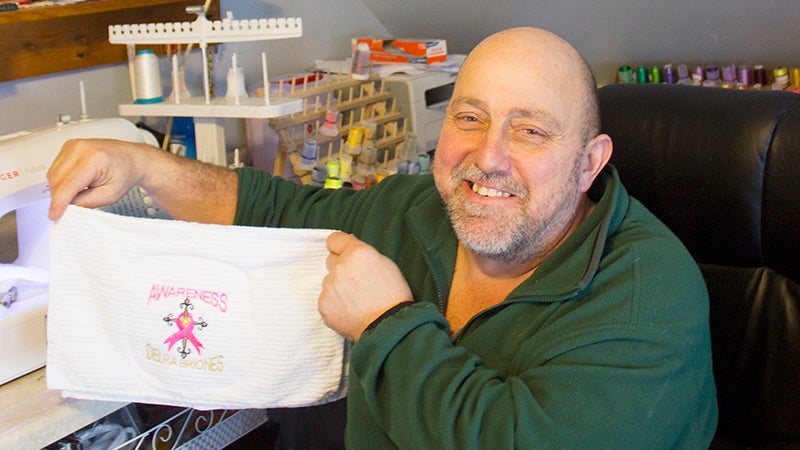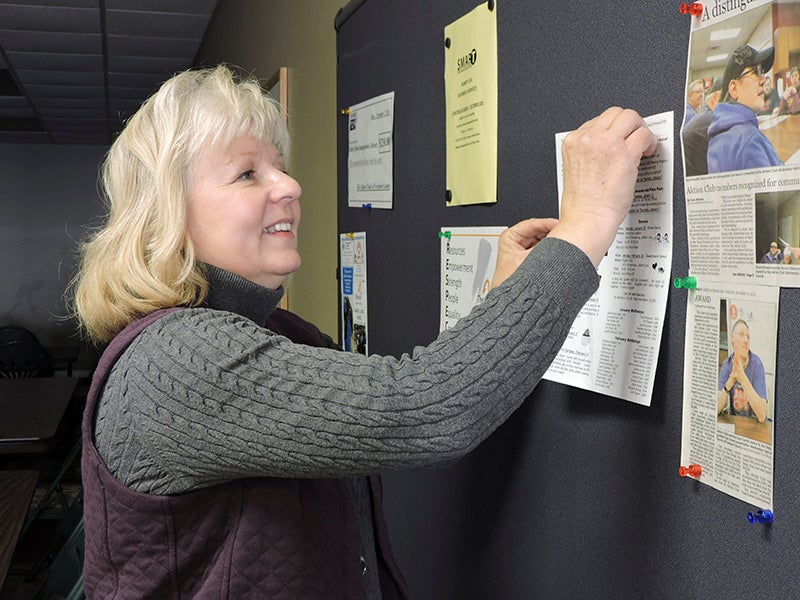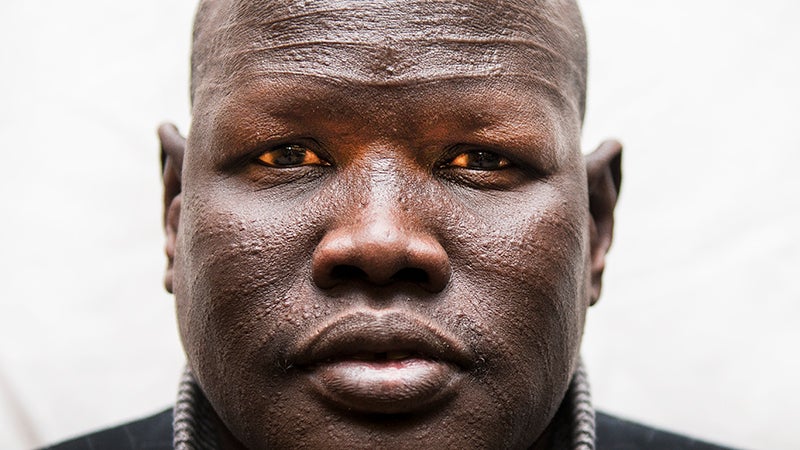Habitat for Humanity sees increase in projects thanks to teamwork
Published 12:52 pm Wednesday, June 22, 2016
Through the 2015-16 school year, Riverland Community College students, volunteers and soon-to-be homeowners have all been hard at work building a home in northeast Austin.
As Habitat’s Executive Director Brigitte Fisher looked around at Riverland students working on wood floors and walls of the budding home on a chilly November afternoon, she couldn’t help but be excited.
“The energy here is amazing,” she said.
The Freeborn/Mower Habitat chapter has seen a wave of activity in recent years, whether it’s through building houses, fixing up properties or its ReStore in the Sterling Shopping Center.
The work to build its most recent home for Gabait Nagid and Nasra Damin and their family was just the latest example of what’s built the recent success of the Freeborn/Mower Habitat for Humanity: partnerships.
“Then big results happen,” Fisher said. “Then you really are starting to make a difference. And that’s what happened with us, ‘We just said, ‘Hey, we can’t do this alone. Who’s with us?’ And then its just been snowballing from there.”
The turnaround was perhaps best displayed when the Freeborn Mower/Habitat for Humanity was asked by Habitat International to present at a regional A Brush With Kindness gathering with representatives from many surrounding states. The premise of Freeborn/Mower’s presentation was on how the chapter was able to serve so many families through its home repair programs. Freeborn/Mower leaders also did a statewide webinar on the same topic.
“There’s a lot of focus on our affiliate right now, others who are struggling to serve a handful of families wondering how we’re serving 30-plus families,” Fisher said. “The reason for our success has been our partnerships. As soon as you decide, hey, poverty is a big giant problem and set aside your pride and say, ‘We can’t tackle this on our own,’ you look at who else is concerned [and] come together and partner up.”
Breaking away
from housing issues
When Fisher started with Habitat, she admits the group needed a boost.
Community partnerships have provided the boost in both communities. In Austin, it’s Vision 2020’s Community Home Improvement Project, the Austin Housing and Redevelopment Authority, Riverland Community College, and smaller partners like many churches, concerned community members and more people. In Freeborn County, Fisher said it’s the United Way, the HRA, Shinefest’s Rocking the Block, which she said is similar to CHIP, and more.
When Fisher started, the CHIP program hadn’t yet begun, and the affiliate hadn’t built a house in a year and the group was in a bit of a lull.
“We needed a new surge of energy,” Fisher said. “We needed a new spark, and CHIP really was that spark.”
CHIP was created in 2013 by Vision 2020’s Community Pride and Spirit Committee, Freeborn/Mower Habitat for Humanity and the HRA. CHIP’s goals are to help homeowners preserve their homes by intervening with needed maintenance to improve the overall appearance of homes in Austin and to build connections among residents.
CHIP’s 2015 goal was to help 20 families, making for close to 40 homes that have been helped by the volunteer-based program over the last three years.
“The biggest changes were we are positively affecting families, and that’s the bottom line is we’re serving more families,” Fisher said. “We have larger support.”
Building projects
Though the home at 1206 Ninth St. NE is habitat’s 22nd home in Austin, it’s the first being built predominantly by Riverland Community College students and their instructors.
For many years, habitat relied on the work of volunteers for building its house and often had to hire construction contractors to help lead the work. By the end of a projects, Fisher said volunteers were spread pretty thin by the work required.
“We really have struggled with that in the past, with having enough volunteer labor so that we’re not exhausting the volunteers we do have,” she said.
But now Riverland is taking the lead and building the house. In past years, Riverland students have helped habitat when they could, but students also built their own house, which they’d sell at the end of the year. Predominantly, Riverland carpentry students are building the house, but some electrical program students help as well for about 16 total students working on the program.
For Riverland, the college now doesn’t have to spend as much money on supplies and financing for the house, those come through habitat. With budget constraints and a dip in enrollment, Alms said it means the carpentry program and college don’t have put up financing and the risk that came with eventually selling the house. But that also takes away the potential for future profit.
“It’s an excellent opportunity for the students to see a home being built from start to finish,” Riverland carpentry instructor Walt Alms said. “It’s been a very good, positive project for us this year.”
While volunteers are still helping on the project, Riverland has had to ensure that its students and instructors take the lead and that habitat volunteers aren’t completing work that the students would need to do as part of their learning process. For example, if students need to learn to hang doors, they’d be in trouble if a volunteer completed that work over a weekend.
Habitat picks families with a need and an ability to pay. Fisher said one of habitat’s key goals is to address the need for housing, and most new homeowners it works with live in some form of substandard housing, whether its due to overcrowding, poor pluming or heating, or mold.
“I think people are looking at us as leaders in the fight against poverty housing,” she said.
But applicants have to be willing to partner, and each applicant has to complete 250 hours on the project — so a husband and wife have to complete 500 hours.
ReStore
Another big success for habitat has been its ReStore, a store that sells used items — mainly building materials and household items — at a lower price with all proceeds going to habitat.
The ReStore celebrated its one-year anniversary in its home in the Sterling Shopping Center in December, and all say it’s been a highly successful year.
“It’s been phenomenal here,” said Lynn Nuckolls, ReStore’s manager.
ReStore moved from a warehouse-type space in northeast Austin to 1415 First Ave. SW in the Sterling Shopping Center, where it opened in December 2014. In its first year, it saw 13,582 transactions as sales jumped from about $30,000 a year to $154,000 a year, according to Nuckolls.
“It’s gone wild. People know we’re here,” she said. “People feel safe coming to where we are.”
Nuckolls remembers looking at the space when it opened and wondering how she’d fill it. Now she wonders if they’ll have enough space for all the items.
ReStore opened about 10 years ago in a corner and just grew, but it was never meant to be a store and wasn’t really successful selling items.
“It just wasn’t retail friendly, nor was it ever intended to be,” Fisher said. “It was built just to be a storage warehouse for our construction materials.”
Now the focus is on retail and they have a retail space, which she said has made a big difference.
At Sterling, the ReStore is more centrally located and accessible to donors and customers alike. They have a donation drop center, and they have the ability to go out and pick up donations.
“If you have the stuff, the shoppers are going to come,” Fisher said. “So we really put focus on getting in good quality donations.”
Habitat prices items low to keep the products flowing through the store.
The ReStore mainly carries furniture and other housing and decorative items like cabinets, lighting, plumbing, doors and more.
“We’re getting amazing furniture,” Nuckolls said.
The ReStore also serves a vital purpose of recycling furniture, and Nuckolls estimated the store has kept 100 tons of furniture out of andfills in its first year at the Sterling center.
Nuckolls is using analytics to grow sales, and she plans to start honing her focus on items that bring ReStore and habitat more money and that will sell more quickly.
Goals for the future
The plan is that in a few years, habitat leaders want the proceeds from the ReStore to fully fund a build all on its own. Nuckolls said they have a responsibility to address and work toward fixing Austin’s lack of affordable housing, and the ReStore will play a key part.
Nuckolls also has aggressive goals to boost ReStore’s sales. She wants to reach $250,000 in sales this year and $400,000 in sales in three years, but donations need to keep coming in for that to happen.
“The donations have to keep coming in. We’re donor-centered,” she said.
Another key will be manpower. ReStore, like habitat, currently has limited staffing levels and are heavily dependent on volunteers.
ReStore had been in a warehouse facility, where it wasn’t very accessible and wasn’t climate controlled.
CHIP Coordinator Brent Johnson said donor and volunteer support will drive continued success for ReStore.
“We’re always trying to get out there to even find more volunteers or more people who want to donate,” he said.
Habitat’s other leaders have plenty of hopes for the future. Johnson said they’re hoping to grow their presence in Albert Lea and Freeborn County. Since the offices and ReStore are both based in Austin, along with the avid support through CHIP, a higher percentage of the work has come in Austin in recent years. But Johnson would like to see it get closer to 50-50 for the towns.
“We want to make sure we can get over there and serve them as well,” he said.
As with all habitat’s projects, volunteers and community support will be key. Habitat is taking on a bigger role with Rocking the Block and is working to partner with the United Way and business leaders.
“We want to get over there definitely more and the way to do it is to keep on working at it,” Johnson said.
In the future, habitat’s mission will continue to be to bring homes to community and hope, so they want to continue having a big effect on families, neighborhoods and the community as a whole.
“We would love to be able to build more houses a year,” Fisher said. “And we’re getting closer to being able to do that, and this partnership is definitely going to be helpful to get us to that.”





